How To Survive The Cube When You'd Rather Be In The Studio
Note: This post, minus a few minor edits, was originally published on ScoutieGirl.com two years ago. Its relevance endures, it's worth posting again.
~~~
This tiny easel sits on my computer at the office. It makes me happy to see it every day.
Do you spend most of your week in a cubicle when you’d rather be in the studio making stuff?
If the answer is yes, you’re not alone.
For various reasons many of us choose to work at a job that doesn’t involve using our right side of the brain all that much and has us spending many hours in less than inspiring grey-walled cubicles.
Even if we like our day job it can feel like a double life sometimes this office vs. studio scenario, left vs. right, grey vs. colour. Thankfully there are ways to lessen the gap.
Below are a few things I’ve tried to help make my days in the cube a little less drab and a little more pleasant. They may not always cure the “I-don’t-wanna-be-here’s”, but they do help. If you’re in a similar situation, you may find some of them useful too.
Build a creative practice around your work hours.
Commit to your craft by practicing it each day you go into work, even if it’s only for 15 minutes. Do it in the morning, at lunch time or after the kids have gone to bed. Claiming and asserting your creative identity can do wonders for the left-brain doldrums.
A few years ago I adopted a work day studio practice and completed more paintings through two months of regular 30-minute spurts than I did while I was on a one-year sabbatical. I've since switched that practice for something else, but the satisfaction I felt is engrained in my memory. It was a game-changer.
Find a creative outlet that you can practice during breaks and lunch hour.
Can you do something with your smartphone or your tablet? A sketchbook and a pen? Knitting needles? It may not be in your usual medium, but it will allow you to flex your creative muscles.
Read books related to your craft, creativity or inspiring creatives during breaks and lunch hour.
Make creativity and inspiration a regular part of your day. If your office job involves number crunching, your left brain will enjoy the break.
Include reminders of your creative identity in your workspace.
Hang up magnets, quotes or postcards related to your craft. If adorning your workspace isn’t practical, carry something in your purse or wallet as a touchstone.
Talk to your colleagues about your art.
Some of them may be creative kindreds themselves and you never know, your cubicle mate may become one of your biggest customers!
Remember why you’re at your current job.
If the primary motivation for staying at your current job is money, remember what that money is paying for. It might be your dream home, your child’s education, or travel. Maybe it’s helping you build up your art supply stash or pay for creative workshops.
Acknowledge and appreciate what your job allows you to do and how it supports your current lifestyle.
Finally, remember that your paid work is only ONE part of your life.
You are not your job. There are many more facets to life than how you create revenue. Sometimes putting less than ideal situations in perspective helps make them more palatable. I write this as much for myself as I do for you.
~~~
I would love to hear from you.
If you’re sitting in a cubicle or working at a job that doesn’t feed your creative soul when you’d rather be doing something else, how do you cope? What do you do to make it work?
What could you do?

